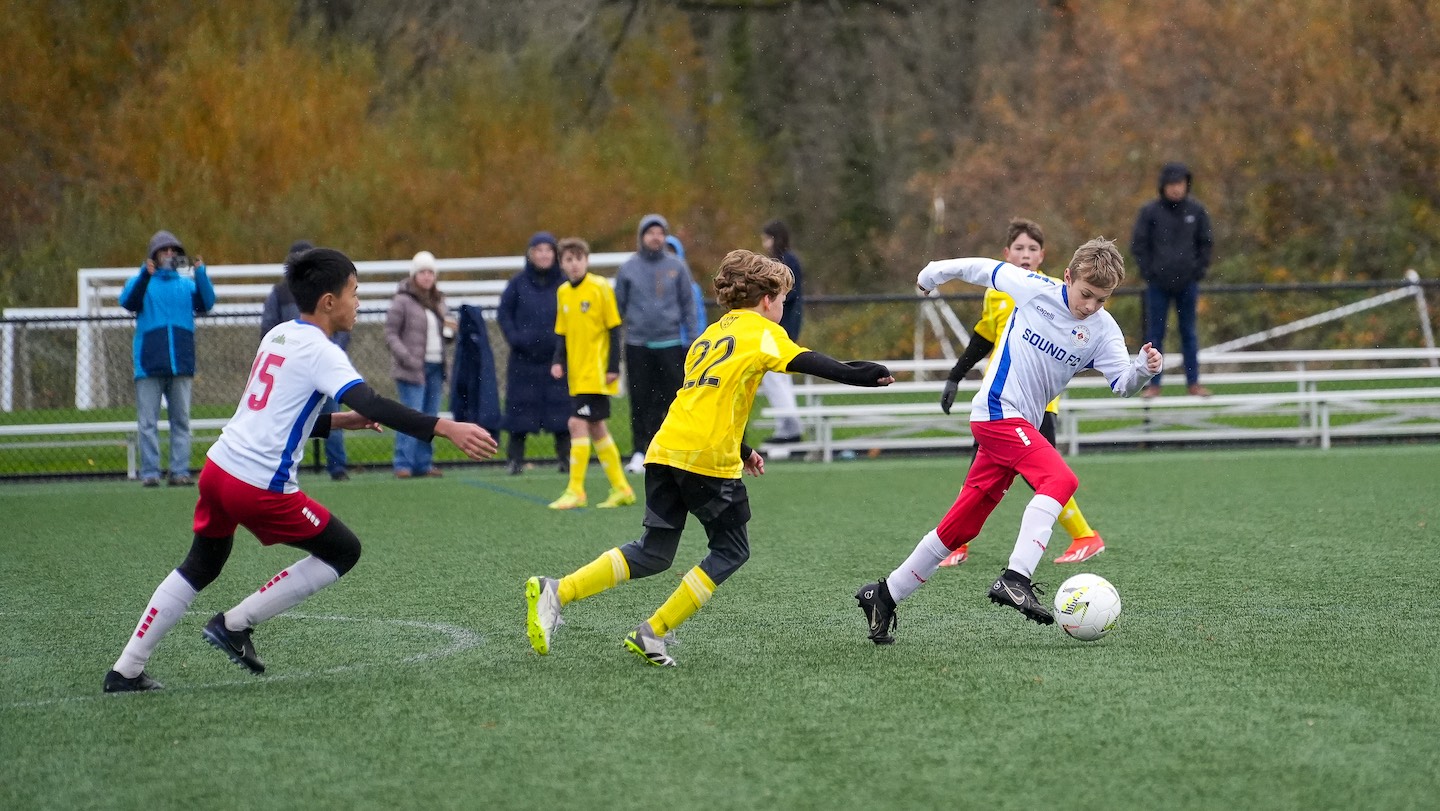I have written more than a few articles on the conundrum that the prevailing trend on having your kids do as much sport as possible brings to the foreground and thought it may be a good time to once again try to get all parents and coaches to look at the physical diet their players or children are participating in. Please try to read all that follows with an open mind.
Why has the multi-sport trend become so prevalent?
- The belief that participating in as many different experiences as possible leads to a more rounded individual.
“A well-rounded education is the pursuit of comprehensive knowledge, balanced across a wide range of subjects.” Carrie Weitz.
- “Keeping them busy.” In a culture where more families than ever have both parents working and the hours that these parents work is on the increase, a belief that having children busy and active is a positive thing is simple to understand.
- Obesity levels within the USA. Coupled with parents inspired by a health club culture and are rightly concerned about the physical condition of their children and search for active environments for their children to participate in.
- Bumper sticker syndrome. Several parents seem to be driven by being able to say, “My child plays soccer, baseball, lacrosse, basketball, football and badminton” to name but a few.
- The belief that having a full schedule is infinitely better than having “free time.” There is an understandable concern in society today that “free time” can lead to problematic screen time. Daily headlines regarding teenagers finding trouble on the internet are both undeniable and hard to ignore.
- “Peer group applause.” Understandably, any teenage boy or girl would and do seek out environments where the applause is loud and constant. Those gifted young athletes with some pace, strength and mobility become fodder for all coaches. It is quite sad how quickly parents can be drawn in by the promise of another Elite sweatshirt.
Having considered the reasons why parents are eager for their child to be a multi-sport athlete, one should also understand the problems and associated issues that arise with multi-sport players
- Overtraining and injury: There can be no doubt that players involved in many different sports, frequently on the same night or day, suffer from injuries caused by overtraining.
Rest – Rest periods are as important as the actual training itself. The physical processes in the body need time to adapt to exercise. Ensure rest days at regular intervals. If the player notices that their performance is no longer improving or drops and they are neither ill nor injured, then a recovery period may be needed.
Taken from: http://www.
- Competitive ability: Playing one high-intensity game in a day is demanding enough. If we add to this equation the amount of physical activity in the previous seven days, the temperature at which the game may take place, the level of the athlete competing against and how well the players rehydrate and replenish between games, one can begin to understand that playing 2, 3 or 4 games in two days at a competitive level is problematic at best.
- Quality of educational environment: Parents and players need to thoughtfully evaluate those sporting situations which they place themselves in. In both the high school arena and the youth sport culture, there are coaches who place players in unhealthy and even dangerous situations. Parents and players should carefully research the coaching and educational qualifications of those responsible for leading training sessions.
- Emotional strain: In a culture where the importance of winning is misplaced, there can be no doubt that the stress placed on our youth players by the majority of youth coaches to win whatever the cost is enormous. Perhaps more difficult to understand, yet undeniably true, is the emotional stress that this environment creates.
- Learning to balance effort, or is it cheating? Players at young ages quickly begin to understand that it is impossible to give 100% physical and emotional effort in 2-3 games in one day or even weekend. Rather than suffer the humiliation of telling mom, dad or the next coach they are tired, they either decide not to give maximum effort or present a limited effort, so they have, “something in the tank” for the next game.
- Coach-Player conflict: The majority of youth coaches live by the cannon that, “as long as you give your best effort and try hard, I will be okay with the outcome.” An unfortunate yet obvious issue is, therefore, presented when players seem to be making limited effort. For coaches who equate playing time with both efforts presented and impact on performance, those players seemingly do not try and quickly find themselves on the bench.
- Conflict resolution and education: In an environment where practices are missed due to training conflicts and effort in games is subpar due to overtraining, tiredness or the desire to “save” oneself for the next game, an enormous number of conflict situations arise.
- Handling conflict situations: Rather than educate their children as to the specific athletic demands of each game, their ability to replenish energy stores, fuel adequately, the need for a training rhythm that includes rest, a large number of parents choose to ignore the issues involved. Frequently, they seek to “battle” the first coach who questions their child’s efforts. The intensity and rage with which these battles occur can be staggering.
- The combined result of all the above is youth players that:
a) are unable to provide a maximum effort in any game
b) begin to develop a behavioral pattern that 50%-70% is good enough
c) have no real understanding of what putting in 100% means
d) have no ability to self-reflect on their performance level and the effort they produced
e) are unable to deal with the ethical and social issues when they let a team down. In this environment, rather than sport building character, it seems to tear it down.
- The true value of team sport for many is in the core values that being on a team can foster. Cooperation, resilience, honesty, self-sacrifice, discipline and reliability all get thrown away when players must constantly let one team or another down.
I believe that the majority of youth coaches are cognizant of all the above. Many have already changed their training patterns, the content of their coaching sessions or the demands they place on their players.
Although I am a firm believer in the “Good coaches adjust mentality” NSCAA journal 2009 article, I do believe that there are certain changes that coaches need to be aware of and in some cases, enthusiastic about:
• Practice should not become a popularity contest. The “fun” in the game should be the game itself and the desire to master the skills of the game in a competitive environment. I believe it is a mistake to start producing training sessions that are focused upon being purely social and fun. In a well-taught highly economical session that caters to all five pillars of the game: technical, tactical, physical, psychological and emotional and social, the fun aspect will be the invisible thread that links all together. The fun is in the doing.
• Coaches need to avoid selling “their sport” in an untruthful manner. Youth and high school coaches promising college scholarships at any level should be treated in a cautious manner.
• Players, in the right manner, must be called to task. One of the essential lessons in playing sports must continue to be “give your best effort all the time and when things go wrong try harder still.” These lessons for life that lie hand in hand with sporting environments must be protected.
• Coaches must do their best to educate parents as to the specific athletic and psychological demands of their sport and the related training, playing and rest ratios needed for long term development.
• Youth coaches should campaign that all tournaments become one game a day events.
• In selecting a sporting menu for their children, parents must educate themselves as to the athletic demands placed on the body and the associated need for periods of rest if optimal development in any sport is going to occur. Ideally, situations where multiple competitive games are played on the same day should be avoided at all costs.
Coaches should seek to enhance their understand of the physical and psychological demands of their game and in so doing should make every attempt to educate the parents within their group. Scientific research has concluded that it takes 8-12 years of training for a talented athlete to reach elite levels (Bloom, 1985; Ericsson et al., 1993; Ericsson and Charness, 1994). This is called the ten year or 10,000-hour rule. For athletes, coaches and parents this translates as slightly more than three hours of practice daily for ten years (Salmela, 1998).
Unfortunately, parents and coaches in many sports still approach training with an attitude best characterized as the “peaking by Friday” approach (Balyi and Hamilton, 1999). We now know that a long-term commitment to training is required to produce elite athletes in all sports.
A specific and well-planned training, competition and recovery regime will ensure optimum development throughout an athlete’s career. Ultimately success comes from training and performing well over the long-term rather than winning in the short term. There is no short cut to success in athletic preparation.








